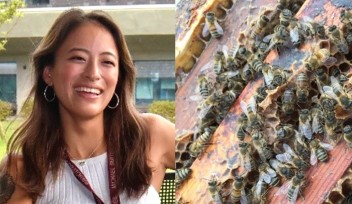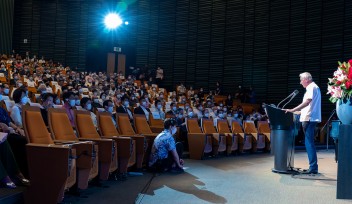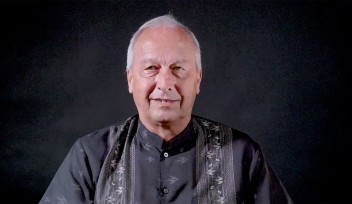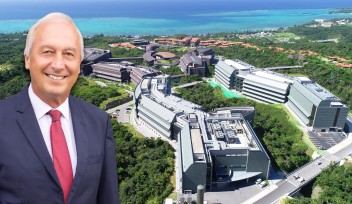日本国の未来への拠点。真の科学技術立国としての再生を目指す
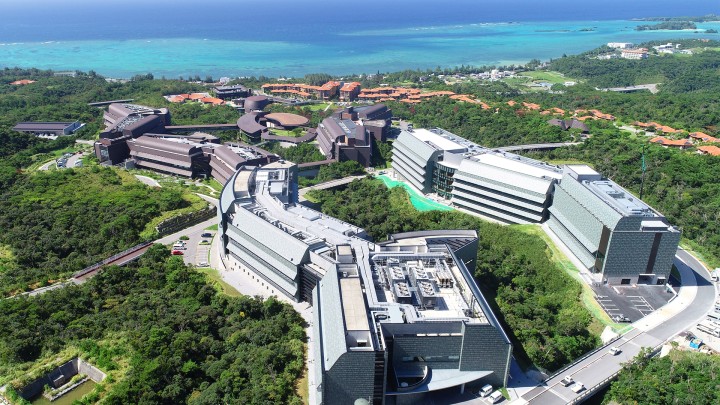
Summary
Unfortunately, Japan has lost its glorious image as a nation of science and technology.
To revitalize the country in this field, in 2011, the Okinawa Institute of Science and Technology Graduate University (OIST) was established.
OIST is a special private university that was conceived by the politician Mr. Koji Omi and is being funded by the Japanese government as part of the Okinawa Promotion Policy.
In this article, we will introduce OIST, a research institute of cutting-edge science and technology aiming to be the world’s best from the center of the main island of Okinawa. Onna Village, the home of OIST, is one of Japan's most popular resort areas.
OIST is also a promising research institution for angel investors planning to start a venture business with cutting-edge science and technology, as it accepts support from general investors as well.
Text by Kazuya Yamauchi. Photos by Hiroko Nakano.
Article
Aiming to become the world's top research institute
The Okinawa Institute of Science and Technology Graduate University (OIST) has been in operation for ten years since its establishment in 2011 and is one of the most notable graduate universities today. At the time of our interview (December 2020), the Lab 1 through Lab 4 were in operation, but there was already a demand for more laboratories, and the Lab 5 and its accompanying residential facilities for associated people were under construction. The university, spread out in the forest of Onna Village, was designed based on an environmental assessment with the topography taken into consideration. The school town was formed to be in harmony with nature – a forest, river, and ponds - and has a wide range of residential facilities for staff and students, making it an attractive facility not only for research but also for living.
OIST is an international graduate university that offers five-year doctoral program specialized exclusively in the sciences. The official language of the university is English, and the university does not have the undergraduate departments like normal universities. OIST, which aims to provide world-class research and education, is a special private university established by the Japanese government for the promotion of Okinawa. Since its establishment, OIST has received a total of over 200 billion yen of government subsidies. Its abundant funds are allowing the university to attract excellent faculty members and researchers from all over the world, keeping the competition high. The university has approximately 1,000 staff members from approximately 60 countries. There are about 400 researchers in total, including 80 faculty members (professors) and about five research assistants per professor. Students come from more than 40 countries around the world, and the maximum number of students per grade is about 50 (total number of students is about 250). The program is conducted in the Western style, with a small group of three students per faculty member, which is completely different from Japanese universities. Anyone with a bachelor's degree is eligible for admission, but about half of the students have a master's degree. The number of applicants is over 1,500 every year, and only about 500 of them are admitted to the university through a narrow gate.
Ranked ninth in the world
In June 2019, the publisher of the world-famous British academic journal Nature, ranked OIST at ninth in the ranking of research institutions for the number of high-quality science publications in 2018. The University of Tokyo and Kyoto University were ranked at 40th and 60th respectively, making OIST the top-ranked institution in Japan. For reference, the top was Cold Spring Harbor Laboratory in the U.S. OIST has made an astonishing accomplishment at its eighth year since establishment. We can conclude that OIST's philosophy of attracting excellent researchers from around the world and promoting the world's highest level of research and education has contributed to the development of the university. At OIST, the professors and associate professors are guaranteed five years of "high trust funding" for their research, with a requirement of undergoing a rigorous review (evaluation) by five outside experts who are invited to check their research results every five years. It is a very strict system and can lead some professors and associate professors to leave the university, but the quality of the researchers is also important to improve the quality of the university. It is OIST's mission to find many researchers who can continue to produce good results.
Interview with Dr. Peter Gruss
President and CEO
Dr. Peter Gruss, who became the second President of OIST in 2017, is a world-renowned molecular biologist in the fields of gene regulation and embryonic development from Germany. We asked Dr. Gruss about his work and future plans.
What kind of research have you done?
I obtained my PhD at a cancer research center in Germany, where I started my research on suppressing the activation of cancer genes. After that, I worked at the National Institutes of Health and the National Cancer Institute in the U.S. After returning to Germany, I served as the director at the Max Planck Institute for Biophysical Chemistry. There, I was able to conduct cross-disciplinary research. My research focused on novel organogenesis from differentiated cells.
Tell us how you came to be appointed as the president and CEO of OIST.
Before coming to OIST, I served as the president of the Max Planck Society for the Advancement of Science for 12 years. The Max Planck Society is one of the world's leading academic research institutions in Germany and produced 37 Nobel laureates so far.
Then, I was contacted by a headhunter about OIST. When I researched OIST on my own, I found that it was very similar to the Max Planck Institute for the Advancement of Science, and became interested. When I visited OIST, I was surprised by its international nature. It was the first time for me to visit such an international environment, and I felt confident about the future growth of OIST.
What do you think the future will look like in 100 or 1000 years?
I think serious scientists would not be able to answer that question. The reason is because science is changing so rapidly. For example, before the advent of the internet, who could have predicted the world we live in now? However, if I must give one example of a field that will be different from today, it would be medicine. I believe that more personalized medical services will be available, and preventive medicine will advance. Also, robotics technology will be more merged into our daily lives. Virtual reality will advance, and the age of people working with machines will come.
Artificial intelligence (AI) will help humans improve their abilities but will not surpass humans. Moreover, AI will never be able to dominate humans.
In the next 20 years, the world will undergo dramatic changes. I am interested in seeing how the world's leaders will steer the ship at that time. The development of science will not take away jobs from people, but it will instead create new jobs. If Japan follows its current course, it will fall far behind the rest of the world. Japan's government budget for science is too small compared to competing countries in the world. More money should be invested in science.
Interview with Ms. Lauren Ha
Associate Vice President for Technology Development and Innovation
Ms. Ha (from Vietnam) is in charge of innovation in technology development at OIST. She is also the department's point of contact for negotiations with general investors. Her job is to establish an innovation ecosystem - an environment where entrepreneurs and companies gather around fundamental research and research facilities, equipment, and programs to create and grow new businesses, and new technologies can help society prosper - around OIST. In other words, Ms. Ha works to bridge the laboratory and the market with technologies that are useful to society for the revitalization of Okinawa. The three main pillars of OIST are (1) to promote development of a world-class research center by attracting outstanding researchers from Japan and abroad to conduct high-quality research, (2) to foster leaders who will lead the next generation of science and technology, and (3) to promote technology transfer and innovation in Okinawa. Ms. Ha is striving to realize (3). OIST is also known for its strong support for researchers, including protection of intellectual property and acquisition of patents, as well as the startup entrepreneurship development program for researchers who wish to start their own businesses.
Interview with Professor Amy Shen
Micro/Bio/Nanofluidics Unit
Here, we will introduce some of the researchers at OIST. Dr. Shen (from China) obtained Ph.D. from University of Illinois and worked as an Associate Professor in the Department of Mechanical Engineering at the University of Washington before assuming her current position. OIST Micro/Bio/Nanofluidics Unit is working to create materials with morphological structures that can be applied in biotechnology, nanotechnology, and energy fields using complex fluids and composite flows. The research is called nano/microfabrication technique, which involves flowing fluid through a tube thinner than a hair and observing what happens when it passes through a complex channel under a microscope. The technique can be applied to biosensors, drug delivery, and other research on cells, bacteria, and even cancer.
Interview with Shivani Sathish
PhD Student
Ms. Sathish (from India), a student who will graduate soon, received her master's degree in the field of genetic engineering from a university in India. Her research involves development of a "microfluidic biosensor," a device that can analyze the composition of blood and concentration of the components at the molecular level. The device can be operated manually, uses no electricity, and requires only a small amount of reagent due to its small size. There is a high hope for commercialization of this clinical testing device.










